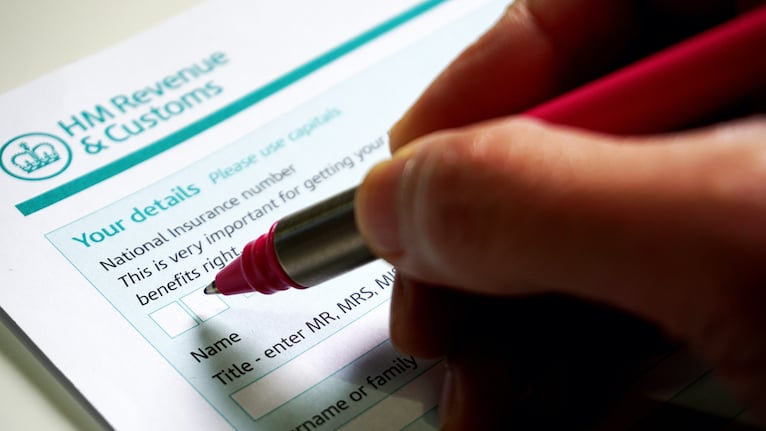Winter Economy Plan: The latest coronavirus government support for tradespeople
Last updated: 3rd March 2021
In the latest Winter Economy Plan, the government has included measures to support UK businesses that are facing decreased demand or are legally required to close their premises, due to the coronavirus (or COVID-19) pandemic. We’ve summarised the new coronavirus government support initiatives available for small and medium-sized (SME) trades businesses below.
Coronavirus Self-Employment Income Support Scheme (SEISS) extension

What is it?
The government has extended the SEISS, which was due to end in November 2020. In the Winter Economy Plan, the government announced that the SEISS now includes a third and fourth direct cash grant. In the Budget on 3rd March 2021, the government announced a fifth grant.
Applications for the third grant (worth up to £7,500) have now closed. However, applications for the fourth and fifth grants will open soon.
The fourth SEISS grant
You’ll get 80% of 3 months’ average trading profits, up to a cap of £7,500. This grant will cover the three month period from February to April 2021.
Eligibility for the fourth SEISS grant will be based on the Self Assessment tax return that you submitted on 2nd March 2021, for the 2019 to 2020 tax year. As this grant takes 2019 to 2020 tax returns into account, it means that it’ll be open to anyone who became self-employed in the 2019 to 2020 tax year.
The fifth SEISS grant
The fifth grant will cover the period from May to September 2021. The amount of the fifth grant that you’ll get will depend on how much your turnover has reduced by from April 2020 to April 2021.
- Those whose turnover has reduced by 30% or more: You’ll get 80% of 3 months’ average trading profits, capped at £7,500.
- Those whose turnover has reduced by less than 30% or more: You’ll get 30% of 3 months’ average trading profits, capped at £2,850.
Who’s eligible?
Anyone who’s self-employed, or a member of a partnership, that:
1. Has trading profits of less than £50,000
HMRC will look at your 2019 to 2020 Self Assessment tax return to confirm this. Your trading profits also need to be equal to your non-trading income, at a minimum.
2. Traded in the 2019-2020 and 2020-2021 tax years
You must have submitted your Self Assessment tax return for the 2019 to 2020 tax year by 2nd March 2021.
3. Is impacted by coronavirus
You must be currently trading, but are impacted by reduced demand caused by coronavirus. Or, you have been trading but are temporarily unable to do so due to coronavirus.
4. Makes certain declarations
You must declare that you intend to continue to trade, and that you have reasonable belief there will be a significant reduction in your trading profits caused by reduced business activity, capacity, demand or an inability to trade, due to coronavirus.
How can I access it?
Whilst applications for the third grant are now closed, applications for the fourth grant will be open from late April 2021. If you’re eligible, HMRC will contact you in mid-April to give you a personal claim date, that you can make your claim from. They’ll also release further info about the fifth grant in due course – we’ll keep this blog post up to date.
Find out more information about the SEISS on Gov.uk.
Coronavirus Bounce Back Loan Scheme extension

What is it?
The Bounce Back Loan allows SMEs to borrow between £2,000 and up to 25% of their turnover, up to a maximum of £50,000. The government has now introduced a new Pay As You Grow option, to allow all businesses that used the scheme to repay their loan over a period of up to 10 years, instead of the 6 years initially offered. This will cut average monthly repayments by almost half.
The extension also allows businesses to temporarily move to interest-only payments for periods of up to six months, up to three times. Repayments can also be paused entirely for up to six months, but only once and only after you’ve made six payments.
Finally, the extension allows businesses that already have a Bounce Back Loan but borrowed less than they were entitled to, to top up their existing loan to their maximum amount. They must request a top-up by 31st March 2021.
If you haven’t applied for a Bounce Back Loan yet, then the application deadline has been extended until 31st March 2021.
No repayments need to be made for the first 12 months of the loan, and the government will cover the first 12 months’ interest payments. After 12 months, you’ll be charged a fixed 2.5% annual interest. You can read more details about the scheme on our Trade Advice Centre.
Who’s eligible?
UK businesses established before 1st March 2020, that have been negatively affected by coronavirus. Banks, insurers, reinsurers (but not insurance brokers), public-sector bodies and state-funded primary and secondary schools are excluded.
If your business was classed as a business in difficulty on 31st December 2019, then you will also need to confirm that you’re complying with additional state aid restrictions.
You can’t apply for the loan if you’re already claiming the Coronavirus Business Interruption Loan Scheme (CBILS), the Coronavirus Large Business Interruption Loan Scheme (CLBILS) or the COVID-19 Corporate Financing Facility.
How can I access it?
Applications are open until 31st March 2021. Fill in the online form on the British Business Bank website to apply.
Coronavirus Business Interruption Loan Scheme (CBILS) deadline extension

What is it?
CBILS is a finance scheme offering SMEs up to £5 million. The government has extended the repayment term to 10 years as part of the Winter Economy Plan, to help businesses that may be otherwise unable to repay their loan. The first 12 months of interest payments and fees are also covered by the government. The application deadline has also been extended to 31st March 2021.
The maximum length of the facility depends on the type of finance you apply for:
- Up to 3 years for overdrafts and invoice finance facilities.
- Up to 6 years for loans and asset finance facilities.
Who’s eligible?
UK-based businesses with an annual turnover of less than £45 million. You must also show that your business:
- Would be viable, if not for the COVID-19 pandemic.
- Has been adversely impacted by the coronavirus.
If you’re applying to borrow £30,000 or more, then you must confirm that your business wasn’t classed as a business in difficulty on 31st December 2019.
Use the British Business Bank’s CBILS SME Checklist to see if you may be eligible for a loan. Banks, insurers, reinsurers (but not insurance brokers), public-sector bodies and state-funded primary and secondary schools aren’t eligible for the Coronavirus Business Interruption Loan Scheme.
How can I access it?
Applications have been extended to 31st March 2021. To apply, visit the British Business Bank website. You’ll need to tell your lender how much you’d like to borrow, what the money is for and how long you’d like to pay it back over. Find out more about the documents you need to provide on Gov.uk.
Find out about more coronavirus government support available on our Trade Advice Centre.
New payment scheme for VAT deferrals

What is it?
Businesses that deferred their VAT due between 20th March and 30th June 2020 now have the option to spread their payments into between 2 and 11 smaller, interest-free instalments until the end of March 2022, by joining the new payment scheme. This replaces the original deadline of 31st March 2021.
| Date you joined by | Number of instalments you can get |
| 19th March 2021 | 11 |
| 21st April 2021 | 10 |
| 19th May 2021 | 9 |
| 21st June 2021 | 8 |
If you chose to defer your VAT payment, then you need to do one of the following:
- Join the VAT deferral new payment scheme by 21st June 2021, on Gov.uk.
- Pay your VAT bill in full, on or before 31st March 2021 (if you’re able to). You can do this on Gov.uk.
- Contact HMRC on 0800 024 1222 by 30th June 2021, if you need more help with paying.
You must meet one of these deadlines in order to avoid interest or a penalty.
Who’s eligible?
Businesses that had a VAT payment due between 20th March and 30th June 2020, have deferred VAT left to pay and opt into the new payment scheme.
How can I access it?
Opt in to the new payment scheme by 21st June 2021. You can do this on Gov.uk.
Enhanced Time to Pay service for Self-Assessment taxpayers

What is it?
An additional 12-month deferral for Income Tax payments that were due on 31st July 2020 and 31st January 2021. This means that these Self-Assessment tax payments won’t need to be paid until January 2022. There’s no penalty for using this service.
On 1st October 2020, HMRC also announced that the self-serve Time to Pay tax liabilities limit has also been increased to £30,000. Find out more information about this on Gov.uk.
Who’s eligible?
Taxpayers with up to £30,000 of Self-Assessment liabilities.
How can I access it?
Use HMRC’s Time to Pay service to secure a payment plan now. First, file your 2019 to 2020 Self Assessment return as soon as possible, so HMRC knows how much you owe. 72 hours after you’ve filed your return, you can set up a Time to Pay instalment arrangement with HMRC. If you owe up to £30,000, then you can do this online, up to 60 days after 31st January 2021. Find more info on making Self Assessment payments on Gov.uk.
Coronavirus Job Support Scheme

What is it?
The Job Support Scheme is a grant scheme replacing the Coronavirus Job Retention Scheme (also known as the furlough scheme), to help employers pay towards the usual wage costs of employees that are working shorter hours. The amount of grant that an employee will get will be calculated based on their normal salary, up to a maximum of £697.92 per month.
Employers will need to pay their staff for the hours that they do work. For each hour not worked, the government and employer will pay one third of the employee’s lost salary each. In total, the employee will receive 77% of their pay, where the government contribution hasn’t been capped.
On 31st October 2020, the Coronavirus Job Retention Scheme was extended until December 2020. It was then extended again, until the end of April 2021. The scheme was most recently extended until 30th September 2021, in the Budget held on the 3rd March 2021. This means that the Job Support Scheme has been postponed until further notice.
Who’s eligible?
Employees that are working a minimum of 33% of their usual hours. Those on redundancy notices won’t be eligible.
To be eligible, businesses must:
- Have created and started a UK PAYE scheme on or before 23rd September 2020.
- Be enrolled for PAYE online.
- A UK, Channel Island or Isle of Man bank account.
You don’t have to have previously claimed through the Coronavirus Job Retention Scheme to claim the Job Support Scheme (once it’s open).
How can I access it?
The employer will be reimbursed in arrears for the government’s contribution. Further information on how to claim hasn’t been released yet. Keep an eye on this article for updates. If you need support in the meantime, read more about the Coronavirus Job Retention Scheme, which is in place until the end of September 2021, on our Trade Advice Centre.
The team at Rated People are working hard to keep new job leads coming in. We’ve even seen a rise in demand for gardeners, painters, carpenters and more! Check out the latest job leads.
For more information on the coronavirus government support available for construction businesses during the pandemic, head to our Trade Advice Centre.
Note: Countries may approach the different phases of lockdown differently. This guidance is in line with the UK government’s advice and is being followed in England. See the specific government websites for any differences.
Note: You must follow the restrictions for your local area. Find out the local restriction tiers for each area in England on Gov.uk. You can also view the UK government guidelines on Gov.uk.
Note: The government has confirmed that there is no limit to the group size when you are meeting or gathering for work. But, workplaces should be set up to meet the COVID-secure guidelines – follow the government’s guidance on how to return to work safely.
For more coronavirus support, visit our Trade Advice Centre:
- Coronavirus: FAQs for tradespeople
- Coronavirus: Government support for construction businesses
- Working in homes safely during COVID-19: A guide for tradespeople
- Coronavirus: How to keep safe whilst working
- Coronavirus: Staying safe whilst working on a construction site
- 6 lockdown lessons about running a business
- Coronavirus: Digital marketing tips to make your small business stand out
- Coronavirus: Which builders’ merchants are open to tradespeople?




